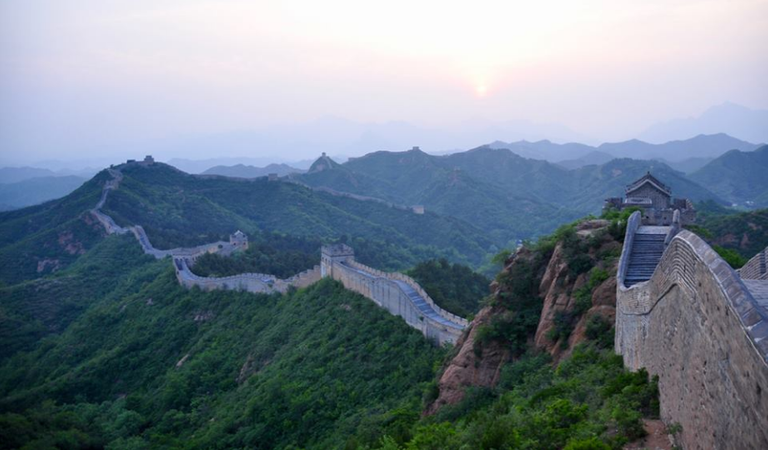The Great Wall of China is a barrier fortification in northern China running west-to-east 13,171 miles (21,196 km) from the Jiayuguan Pass (in the west) to the Hushan Mountains in Liaoning Province in the east, ending at the Bohai Gulf. It crosses eleven provinces/municipalities (or ten, according to some authorities) and two autonomous regions (Inner Mongolia and Ningxia). Construction of the wall began in the Qin Dynasty (221-206 BCE) under the First Emperor Shi Huangti and continued over hundreds of years throughout many different dynasties. The Great Wall in the present day is almost completely the work of the Ming Dynasty (1368-1664 CE) who added the distinctive watchtowers and expanded the length and width of the wall. The now-famous national monument fell into decay following the Ming Dynasty, when the Qing Dynasty (1644-1912 CE) took power and expanded the border of China northwards, making the wall obsolete. Restoration and preservation efforts only seriously began in the 1980's CE, and the wall was declared a UNESCO World Heritage Site in 1987 CE
During the time known as The Warring States Period (476-221 BCE), the different regions of China fought for control of the country during the collapse of the Eastern Zhou Dynasty (771-226 BCE). One state emerged victorious from this struggle: the state of Qin which is pronounced 'chin' and gives China its name. The general who led Qin to victory was Prince Ying Zheng who took the name `Qin Shi Huangti' (First Emperor) after conquering the other states.
Shi Huangti ordered construction of the Great Wall to consolidate his empire. The seven warring states each had walls along their border for defense, which Shi Huangti destroyed after he took power. As a sign that all of China was now one, the emperor decreed a great wall would be built along the northern border to defend against the mounted warriors of the nomadic Xiongnu of Mongolia; there would be no more walls marking boundaries between separate states in China because there would no longer be any separate states. His wall ran along a line further to the north than the present one, marking what was then the border between China and the Mongolian plains. The wall was constructed by unwilling conscripts and convicts who were sent north under guard from all over China for the purpose. Shi Huangti was not a benevolent ruler and was more interested in his own grandeur than the good of his people. His wall was not regarded by the Chinese people under the Qin Dynasty as a symbol of national pride or unity but as a place where people were sent to labor for the emperor until they died.
and this is the most romantic thing I did with my wife
Maybe this is the thing I will never forget throughout life
You should come here together with your wife(family)


Great introduction and nice pictures!
Will like to walk the great wall before I'm too old.